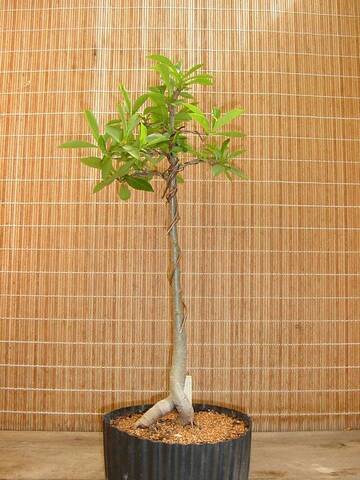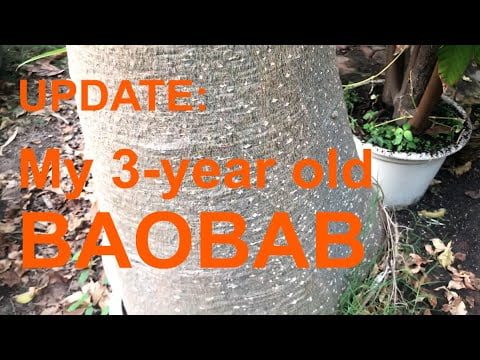Alright, hold onto your gardening gloves because we’re about to unravel the mysteries of growing your very own baobab bonsai.
You know those whimsical trees with bulbous trunks that look like they were plucked straight out of a Dr. Seuss book? Well, those are baobabs, and they’re about to become your new obsession. Imagine having a tiny, adorable version of this majestic South African tree sitting on your windowsill, waving its branches hello.
But before you get carried away daydreaming about your baobab bonsai, let’s answer the burning question: how long does it take to grow one? Buckle up, my green-thumbed friends, because this is going to be one wild ride!
Factors Affecting Baobab Bonsai Growth
Baobab bonsai trees are unique and beautiful specimens that require specific care and attention to thrive. Several factors can affect the growth and development of baobab bonsai, including climate and environment, baobab species, size of sapling, quality of bonsai soil, proper watering and fertilization, and pruning and training techniques.
Understanding these factors is crucial for successfully cultivating a baobab bonsai tree.
Climate and Environment
The climate and environment play a vital role in the growth and overall health of any plant, including baobab bonsai trees. Baobab trees are native to regions with warm climates, such as Africa and Australia. Therefore, it is essential to recreate a suitable bonsai climate for them to thrive.
Baobab trees require a warm and sunny environment to flourish. They need temperatures ranging between 60-80°F (15-27°C) during the day and slightly cooler temperatures of 50-65°F (10-18°C) at night. Adequate sunlight is also crucial for their growth as they are sun-loving plants. Therefore, ensure that your baobab bonsai receives ample sunlight each day.
Baobab Species
There are several species of baobab trees, but two of the most common ones used for bonsai cultivation are Adansonia digitata (African baobab) and Adansonia gregorii (Australian boab tree). Each species has its unique growth characteristics and requirements.
African baobab trees are known for their iconic barrel-shaped trunks and large, spreading branches. They are relatively slow-growing, but their longevity makes them a popular choice for bonsai enthusiasts seeking a long-term project. On the other hand, Australian boab trees have distinctive bottle-shaped trunks and smaller, more compact foliage. They tend to have a faster growth rate compared to African baobabs.

Size of Sapling
The size of the sapling you choose for your baobab bonsai can impact its growth and development. Young saplings are more delicate and vulnerable, requiring extra care and attention. Mature seedlings, on the other hand, are more robust and resilient, making them easier to work with.
To create a bonsai from a young baobab sapling, air layering techniques can be employed. Air layering is a method of encouraging roots to grow from a branch while still attached to the parent tree. Once the roots have developed, the branch can be cut off and potted as a bonsai. Another technique is grafting, which involves combining a young sapling with a mature tree’s rootstock to expedite growth and development.
Quality of Bonsai Soil
The quality of the soil plays a significant role in the overall health and growth of a baobab bonsai tree. Baobabs require well-draining soil that retains enough moisture without becoming waterlogged. A combination of organic and inorganic materials is often used to achieve the ideal soil composition.
The ideal bonsai soil for baobabs consists of a mix of components, such as Akadama, pumice, and lava rock. These materials provide excellent drainage and aeration, allowing the roots to breathe and preventing water accumulation. The soil composition should also retain essential nutrients that the tree needs for healthy growth.

Proper Watering and Fertilization
Watering and fertilization are crucial aspects of baobab bonsai care. Proper watering frequency and amount are essential for maintaining the tree’s hydration without causing root rot. Baobab bonsai should be watered when the soil has started to dry out, ensuring that the water penetrates the entire root system.
Fertilizers provide the necessary nutrients for baobab bonsai growth. Organic fertilizers, such as compost or fish emulsion, can be used to provide a slow-release nutrient source. Additionally, balanced bonsai fertilizer, specifically formulated for bonsai trees, can be applied according to the manufacturer’s instructions. It is crucial to avoid over-fertilization, as it can lead to root burn and other issues.
Pruning and Training Techniques
Pruning and training are essential techniques for shaping and styling baobab bonsai trees. Regular pruning helps maintain the desired shape, control growth, and promote ramification, which refers to the development of multiple branches from a single point. Pruning also allows for adequate light penetration and airflow throughout the tree.
Branch and root training are crucial for creating the desired bonsai form. Wiring is often used to guide branches into specific positions and create the desired overall silhouette. Care should be taken when wiring baobab bonsai trees, as their branches are relatively fragile and prone to breakage.

Baobab Bonsai Growth Timeline
Understanding the baobab bonsai growth timeline can help bonsai enthusiasts set realistic expectations for their trees. Patience and dedication are essential throughout the entire process, as baobabs are not fast-growing trees.
The baobab bonsai growth timeline generally follows these stages:
Seed Germination and Early Growth
Baobab bonsai cultivation often begins with germinating baobab seeds. This stage typically takes several weeks to months, depending on the seed’s freshness and viability. As the seedlings emerge, they require careful nurturing and protection from extreme conditions.
Development of Trunk and Branches
During the early years, the baobab bonsai focuses on developing its trunk and primary branches. This stage can take several years, with the trunk gradually thickening and branching becoming more pronounced.
First Bonsai Styling
After the trunk and branches have developed adequately, the first bonsai styling can take place. This stage typically involves refining the tree’s shape and structure, removing any unwanted branches, and applying wiring techniques to guide the branches into the desired positions.
Maturity and Aesthetic Appeal
As the baobab bonsai matures, its overall aesthetics improve. The trunk becomes more gnarled and textured, and the branches become more refined and balanced. This stage often requires ongoing pruning and training to maintain the desired form.
Full-sized Bonsai
Achieving a full-sized baobab bonsai can take several decades or even longer. This stage represents a significant accomplishment, with the bonsai tree exhibiting all the characteristics of its larger counterpart in nature.
Potential Timeframe for Baobab Bonsai Growth
The timeline for baobab bonsai growth can vary depending on various factors, including the species, climate, care, and individual tree characteristics. However, a general timeframe can be outlined as follows:
Years 1-3: Seed Germination and Establishment
During the first few years, the focus is on seed germination and providing optimal conditions for the seedlings’ growth. This stage sets the foundation for future development.
Years 3-5: Trunk Thickening and Branch Development
The young baobab bonsai starts developing its trunk’s girth, with the primary branches becoming more prominent. Regular pruning and training techniques can be employed to encourage balanced growth.
Years 5-10: Initial Bonsai Styling and Training
Around this timeframe, the baobab bonsai is ready for its first styling and training session. A desired shape and structure begin to take form, with careful pruning and wiring techniques employed to create the desired aesthetic.
Years 10-20: Maturity and Aesthetic Refinement
The baobab bonsai enters its maturing stage, with the trunk becoming more gnarled and textured. Further refinement of branches and overall form continues during this period.
Years 20 and Beyond: Full-sized Bonsai Achievement
After several decades, the baobab bonsai can achieve its full-sized potential, exhibiting all the traits and characteristics of its larger counterparts found in nature. This stage represents a significant milestone for bonsai enthusiasts.

In Summary
Growing a baobab bonsai requires careful attention and dedication, but the rewards are well worth the effort. Understanding the factors that affect baobab bonsai growth, such as climate and environment, baobab species, size of sapling, quality of bonsai soil, proper watering and fertilization, and pruning and training techniques, is crucial for success.
Remember that each baobab bonsai tree is unique, and growth variations may occur. Patience and dedication are key throughout the bonsai journey. While it may take several years or even decades to achieve a full-sized baobab bonsai, the process itself is enjoyable and rewarding.
Embrace the journey, and soon you’ll have a stunning baobab bonsai tree to admire and show off in your bonsai garden.


